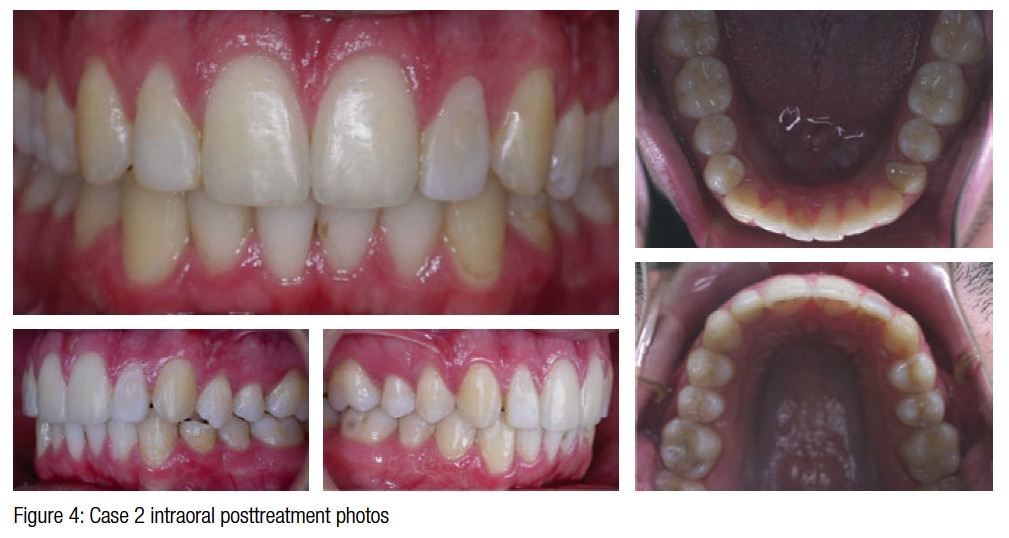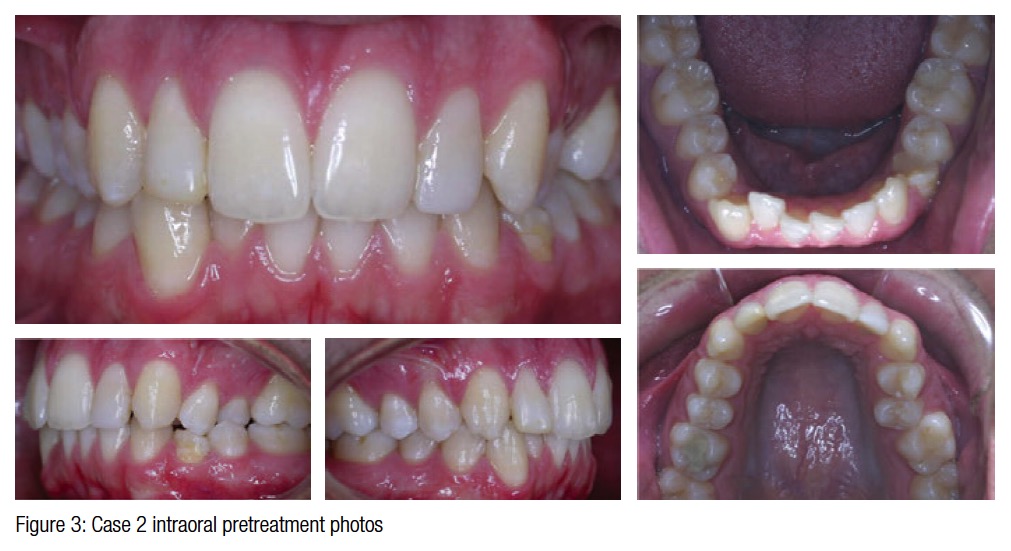Dr. Gary Brigham discusses faster orthodontic movement without compromising clinical outcomes
Despite significant technological advances in the orthodontic industry over the past 2 decades, treatment length still remains one of the top patient concerns. As clinicians, we are continually faced with meeting patient expectations of shorter treatment times without compromising clinical outcomes.
When Invisalign® (Align Technology) was first introduced in the late 1990s, although its efficacy was already clearly documented, it was still viewed by most clinicians as a “disruptor” to the profession. Invisalign immediately impacted both the scope and manner in which orthodontic treatment would be administered and delivered, permanently changing the nature of orthodontic treatment for the future.
Many practitioners, including myself, were initially reticent to embrace this technology and skeptical that we could move teeth with removable aligners and expect the same clinical outcomes as we were seeing with fixed appliances.
Due to the unprecedented patient interest and demand for this new treatment, I had little choice other than to adopt the modality as quickly albeit as cautiously as possible, to better serve the patients in my practice. To sustain my capacity to use Invisalign, I relied in large part upon the experience and expert guidance of the early adopters who had embraced this modality and generously shared their clinical experience.
With Invisalign use in my practice expanding year after year, new challenges with this treatment emerged. As Invisalign technology continued to evolve, and it began to be applied to more complicated cases, the number of aligners required to achieve these expanded treatment objectives increased. This translated into increased treatment time, often frustrating patients. As a result, I was faced with a newfound treatment dilemma. My choices were either to limit treatment goals to accommodate patients’ expectations of acceptable treatment time, or to spend an inordinate amount of time encouraging patients to remain in treatment until their original treatment objectives had been met. In the past few years, these challenges have been magnified by the emergence of teens with complicated lifestyles and schedules, and aging baby boomers with severely worn dentitions and craniomandibular complications.
Now more than ever, the pertinent question is how to make treatment more efficient without sacrificing great clinical outcomes.
Propel as a proven orthodontic disruptor
The Propel® Excelleration Drivers (Propel Orthodontics) have proven to be the answer to this dilemma in my practice by providing significantly faster orthodontic movement without sacrificing clinical outcomes.
Texeira, et al., have documented that bone remodeling can be accelerated through the use of micro-osteoperforations that result in an increase in local levels of cytokine activity around a tooth.1
Through a scientifically proven and patented process called micro-osteo-perforation, Propel stimulates the alveolar bone to induce an inflammatory response, accelerating tooth movement in the treated areas (significantly increased the rate of tooth movement by 2.3-fold with no significant patient pain or discomfort2).
After reviewing the clinical literature supporting the efficacy of micro-osteo-perforations, I was intrigued by the promise of more efficient and predictable treatment. I was, however, still reticent to embrace what I considered to be an invasive technology, just as I had been during my early Invisalign experience.
Once again, I followed the lead and guidance of the early adopters who had already embraced the technology and had well documented the positive impact micro-osteo-perforation had made in their practices.3,4
I prefer Propel over other accelerated orthodontic options because it provides complete doctor control rather than relying on patient cooperation to affect results. Moreover, it is clearly the most cost-effective treatment modality when compared to other accelerated orthodontic devices.
The case studies that follow present a few examples of the use of Propel with Invisalign treatment. Although these cases focus exclusively on clear aligner treatment, we also use Propel in my practice to reduce treatment time in fixed appliance cases, particularly in patients with space closure associated with extraction or missing teeth, as well as impacted tooth and severe rotation cases.
Case study 1

Case 1 represents one of my introductory applications of Propel. The patient, a 50-year-old female, presented with a Class I malocclusion characterized by severe mandibular incisor crowding with proclination of tooth No. 24 which created traumatic occlusion with tooth No. 9. The case was further complicated by the recent placement of a bridge to replace a missing tooth No.19, which eliminated the option of arch development to create space (Figure 1). The patient was seeking treatment to avoid further tooth extraction. The patient underwent an initial 7 months of aligner treatment during which she was instructed to exchange aligners every 2 weeks (14 of 42 total aligners). At this point, the patient expressed interest in accelerating her treatment, and Propel was recommended and performed on all 12 anterior teeth. The patient was then instructed to exchange the next 28 aligners weekly and completed her treatment in 14 total months rather than the 21 months initially anticipated (Figure 2).
 Case study 2
Case study 2
 Case 2, a 21-year-old male, presented with a Class II subdivision left malocclusion characterized by 50% overbite, crossbite of the left second bicuspids, and significant mandibular incisor crowding. The case was further complicated by a severely dys-morphic mandibular left first bicuspid (Figure 3). For this case, I proactively recommended Propel at the outset of treatment, and the micro-osteoperforations were performed immediately after the placement of the aligner attachments at the time of the first aligner delivery. Two to three micro-osteo-perforations were performed at the dentoalveolar bone between each tooth from the mesial of the molar to the mesial of the opposite molar in both arches. This now represents our current Propel protocol. The patient was instructed to exchange aligners weekly (total of 32 aligners), and all ortho-dontic movements were completed in 8 months of treatment time (Figure 4).
Case 2, a 21-year-old male, presented with a Class II subdivision left malocclusion characterized by 50% overbite, crossbite of the left second bicuspids, and significant mandibular incisor crowding. The case was further complicated by a severely dys-morphic mandibular left first bicuspid (Figure 3). For this case, I proactively recommended Propel at the outset of treatment, and the micro-osteoperforations were performed immediately after the placement of the aligner attachments at the time of the first aligner delivery. Two to three micro-osteo-perforations were performed at the dentoalveolar bone between each tooth from the mesial of the molar to the mesial of the opposite molar in both arches. This now represents our current Propel protocol. The patient was instructed to exchange aligners weekly (total of 32 aligners), and all ortho-dontic movements were completed in 8 months of treatment time (Figure 4).
Case study 3


Case 3, a 40-year-old female, presented with a Class I malocclusion characterized by bimaxillary arch constriction, mild mandibular incisor crowding, and crossbite of the right canines (Figure 5). The patient was anxious to complete treatment quickly and elected to include Propel as part of her treatment plan. Propel was initiated immediately after the placement of the aligner attachments, at the time of the first aligner delivery. The patient was initially instructed to exchange aligners every 7 days (26 total aligners). After 2 months of treatment (eight aligners into the planned treatment), the patient reiterated her desire to finish treatment as quickly as possible. As a result, I changed the aligner protocol and instructed her to exchange aligners every 3 days for the remainder of her treatment. All clinical movements were expressed, and the patient completed treatment in less than 5 months (Figure 6). Dr. Thomas Shipley (Peoria, Arizona) originally proposed the protocol of aligner exchange every 3 days, as opposed to the standard 7-day period recommended when using Propel. Dr. Shipley has documented numerous cases with exceptional results using this exchange protocol.
Over the past several months, we have experienced significant success using Dr. Shipley’s 3-day aligner exchange protocol. For more challenging cases, we have found the greatest success when educating patients on how to identify and monitor their own aligner tracking and empowering them to determine their optimal aligner exchange rate (either a 3-, 5-, or 7-day aligner exchange). For example, when employing the Nicozisis Extrusion Protocol for extruding maxillary incisors to establish smile arcs (Dr. Jonathan Nicozisis, Princeton, New Jersey), patients often require 4-5 days of aligner wear to maintain tracking when extruding dysmorphic maxillary lateral incisors.
The success of this patient-centric approach relies heavily on patient understanding of the critical importance of monitoring tracking, and this is emphasized at each appointment.
Conclusion
Incorporating Propel into our practice has proven to be a positive disruptor and has provided a solution to the dilemma of how to shorten treatment times without compromising clinical outcomes. We have found success using Propel for both fixed appliance and Invisalign cases, but the results achieved with aligners have been especially remarkable. The use of Propel has consistently improved our practice efficiency, increased our productivity, and is attracting patients to our office through new patient referrals. Accordingly, as more orthodontists discover its advantages, it is anticipated that Propel will be identified as one of the most significant positive disruptors of next-generation orthodontic treatment.
This information is sponsored and provided by Propel Orthodontics.
Stay Relevant with Orthodontic Practice US
Join our email list for CE courses and webinars, articles and mores
Something went wrong. Please check your entries and try again.



 Case study 2
Case study 2